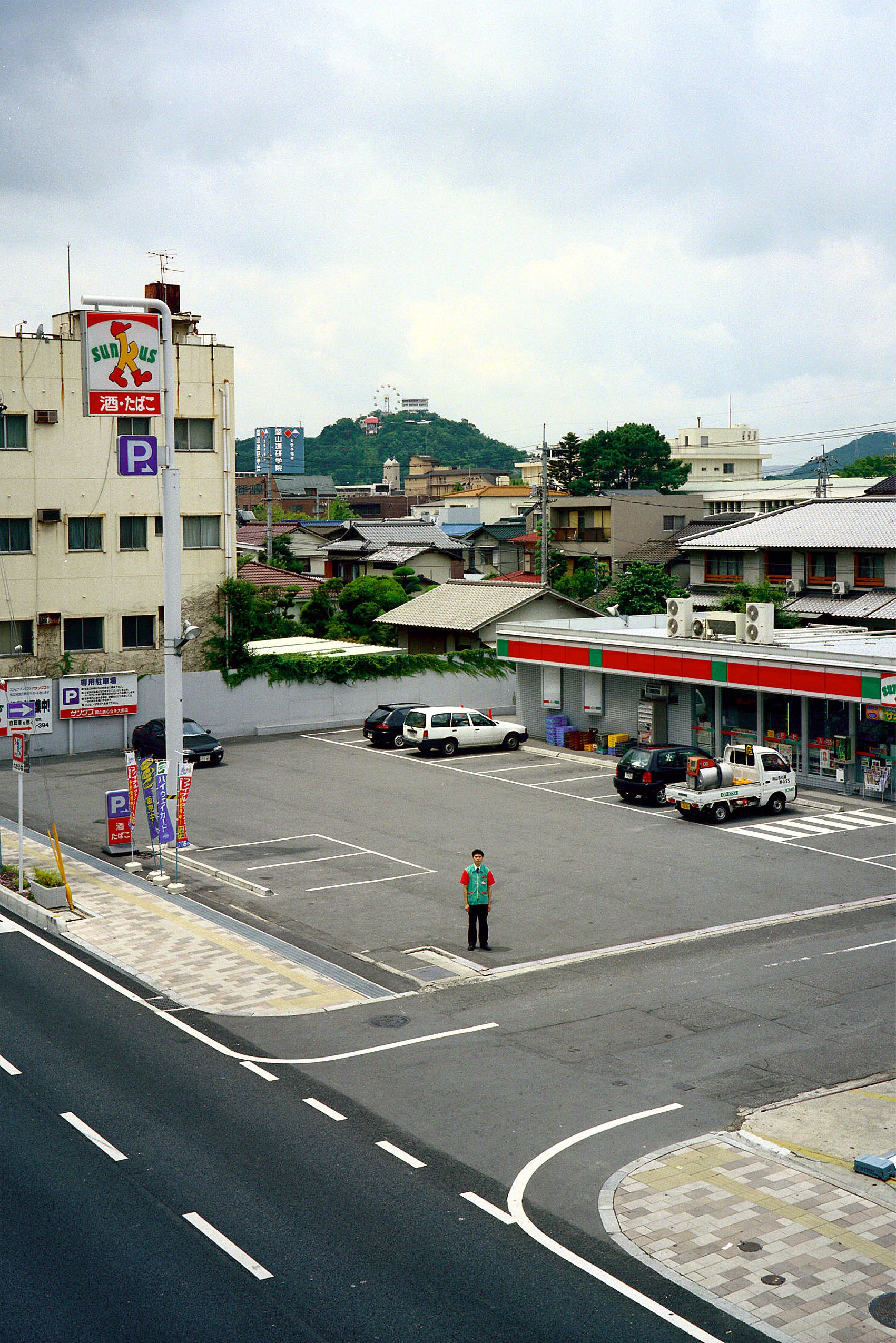Okayama
European Eyes on Japan
Arriving at Okayama station one can sense that the countryside is not too far away. Maybe it is because of the relaxed atmosphere amongst the people who are on the streets or perhaps the apparent absence of those flashy Big City buildings you seem to see in pretentious towns all over the world.
A few days after my arrival I found a way to photograph people as well as their own environment. There were no crowds so there was a feeling of space: I found I could easily photograph a person from distance and show his wider surroundings sometimes even the landscape without having anybody else in the picture. I was looking for a kind of truth in photographs, the truth behind the stereotyped images that you see of salary men or youth culture in the tourist brochures of Okayama prefecture.
Photographing inconspicuous people in the casual presence of their everyday surroundings gives me the opportunity of presenting these surroundings in a natural way. Just as we experience it. We rarely seem to look closely at our own enviroment the place where we live or work, it is just there. The scenery is just a routine part of life: we have seen it a thousand times before.
I photographed many people, distracting them from their daily routine for just a few minutes: a saleswoman in front of the toyshop where she works, a pump attendant in front of a filling station, a bicycle repair man in front of his shop, a cook in front of the restaurant and so on. They were all very friendly and helpful. Some of them stood attention without being ask to do so. I was touched by the image. It reminded me of the early years of portrait photography in the nineteenth century, when people had to stand very still because of the long exposure times. But they also seemed to sense the solemnity of the moment; the fact that in a photograph you are immortalized.
For the Okayama series I was commissioned by EU-Japanfest for their project European Eyes on Japan. I stayed in Okayama prefecture for 3 weeks during the summer of 2001. The photographs were shown in Okayama and Hiroshima together with the work of Anne Daems, Jan Kempenears and Theo Baart and published in Europeans Eyes on Japan 4.










